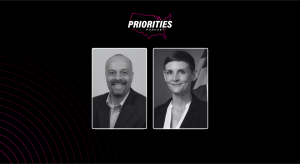State IT work ‘moves pretty fast,’ NASCIO 2025 survey shows

The National Association of State Chief Information Officers on Monday published the results of its annual membership survey. The group, which represents state governments’ highest ranking technology officials, this year prodded the broad range of jobs that CIOs must surmount — from guiding AI policies and adapting new accessibility guidelines to managing relationships across their wide enterprises — and encapsulated the current state of affairs by borrowing from the 1986 teen comedy Ferris Bueller’s Day Off, in which the eponymous hero, played by Matthew Broderick, intones: Life moves pretty fast. If you don’t stop and look around once in a while, you could miss it.
In a neat 28 pages, the report captures much of what’s so quickly changing in the work of state IT offices. The group’s report is never meant to be comprehensive, but interviews with officials and status updates on its longitudinal studies show how attitudes, such as those around generative artificial intelligence tools, and federal policies, like the Justice Department’s April 2026 deadline for states to ensure their websites are accessible, are driving technology decisions in state governments in new directions.
Though NASCIO picks and chooses each year’s survey topics to prevent the findings of any one report from becoming too unwieldy, one topic in particular, AI, was impossible this year to ignore, said Doug Robinson, NASCIO’s executive director. In an attempt to sensibly quantify a trend many have treated more recklessly than two parking attendants joyriding a 1961 Ferrari 250 GT California, the group asked its members to describe the maturity of their AI implementations. Eighty-eight percent said they’ve completed guidelines for responsible use, security and ethics, 84% have documented what apps agencies are using and 82% have created advisory committees and task forces.
A study published this month by researchers at The Budget Lab at Yale University found that, despite much hand-wringing about what generative AI might do to the labor market, it’s so far had no measurable effect. The researchers conceded that market effects may simply be delayed, as they were with the introduction of personal computers decades ago, and concluded it is “reasonable to expect” it might take longer for any effects to materialize.
Employees of state governments are among those testing the technology’s ultimate effects. NASCIO’s survey found that employees in 82% of state government offices are using AI tools in their daily work. Ninety percent of states reported they’ve begun pilot projects, 71% have begun training staff, 51% have created “sandboxes” for safe testing and 25% have dedicated funding.
Anticipating an April 2026 Department of Justice deadline requiring states to meet accessibility standards for websites and other digital assets, NASCIO’s report also asked CIOs about their progress in ensuring state services can be used by everyone. They’re working on it, but they face challenges. Two-thirds of states have hired a technology accessibility coordinator, but only 46% have funding for accessibility improvements, and only one state has fully implemented its plan. Many could miss meeting full compliance by the deadline.
One of the slower moving changes inside technology offices is represented here, too. When asked to select the attributes that best described their roles, the top responses to a forced-choice question were change leader, communicator, strategist and relationship manager. One unnamed respondent asked to issue advice to new state CIOs said, “Understand that most of your job has nothing to do with IT.”
Though perhaps not intending to be the bearer of bad tidings, the report does in fact point to an uncertain future for state IT budgets. State revenues are on the decline after rising to surprising levels during the COVID-19 pandemic, and the majority of states operate on chargeback funding models, recovering much of their funding from other agencies that need technology services.
And yet, half of respondents said their budgets increased, while only 18% said they’ve seen decreased budgets and 32% said they stayed the same. But, Robinson said, this isn’t surprising because this year’s budgets were set before the tumult of 2025 and Donald Trump’s cuts to Medicaid and other programs could be priced in. The first months of Trump’s second presidency have brought spending cuts that if George H.W. Bush was alive today might even be tempted to call — anyone? — voodoo economics. Some CIOs reported to NASCIO having already been affected by federal cuts, with one official specifically calling out the sweeping reductions at the Cybersecurity and Infrastructure Security Agency.
NASCIO’s latest report is titled Leading Change Through Uncertain Times, apt for a year in which tariff rates can change by the hour and programs legally created by Congress can be abandoned at whim. And the landscape for state CIOs isn’t expected to become any more stable. Thirty-six states and three territories are set next year to hold gubernatorial elections, races sure to bring leadership changes and shrink the median state CIO tenure, which currently hovers around 30 months, by NASCIO’s accounting. Instability doesn’t only have to bring chaos, though. As Robinson pointed out: “We will have a whole set of new perspectives.” One might even say it’s a fool’s paradise.






